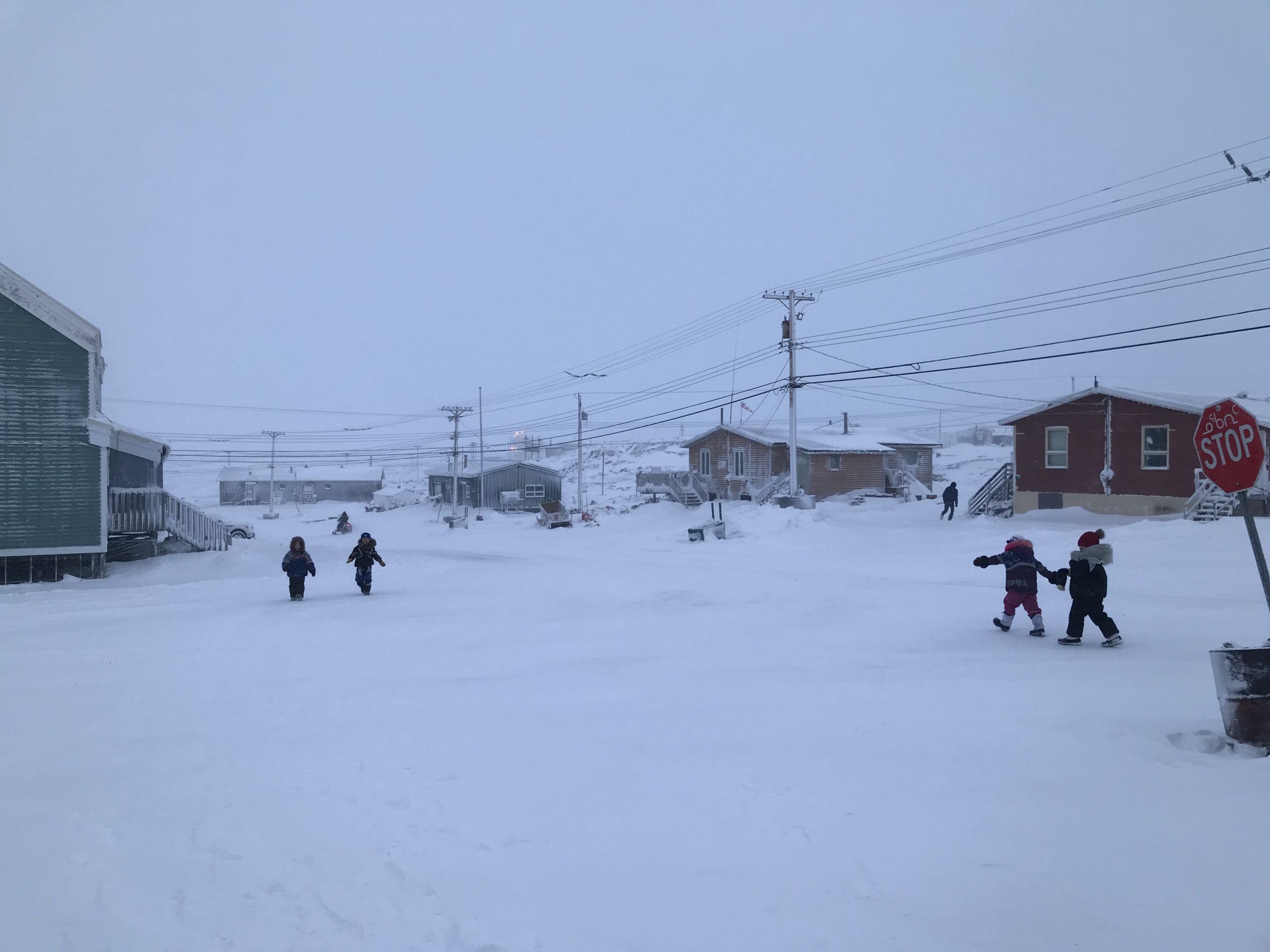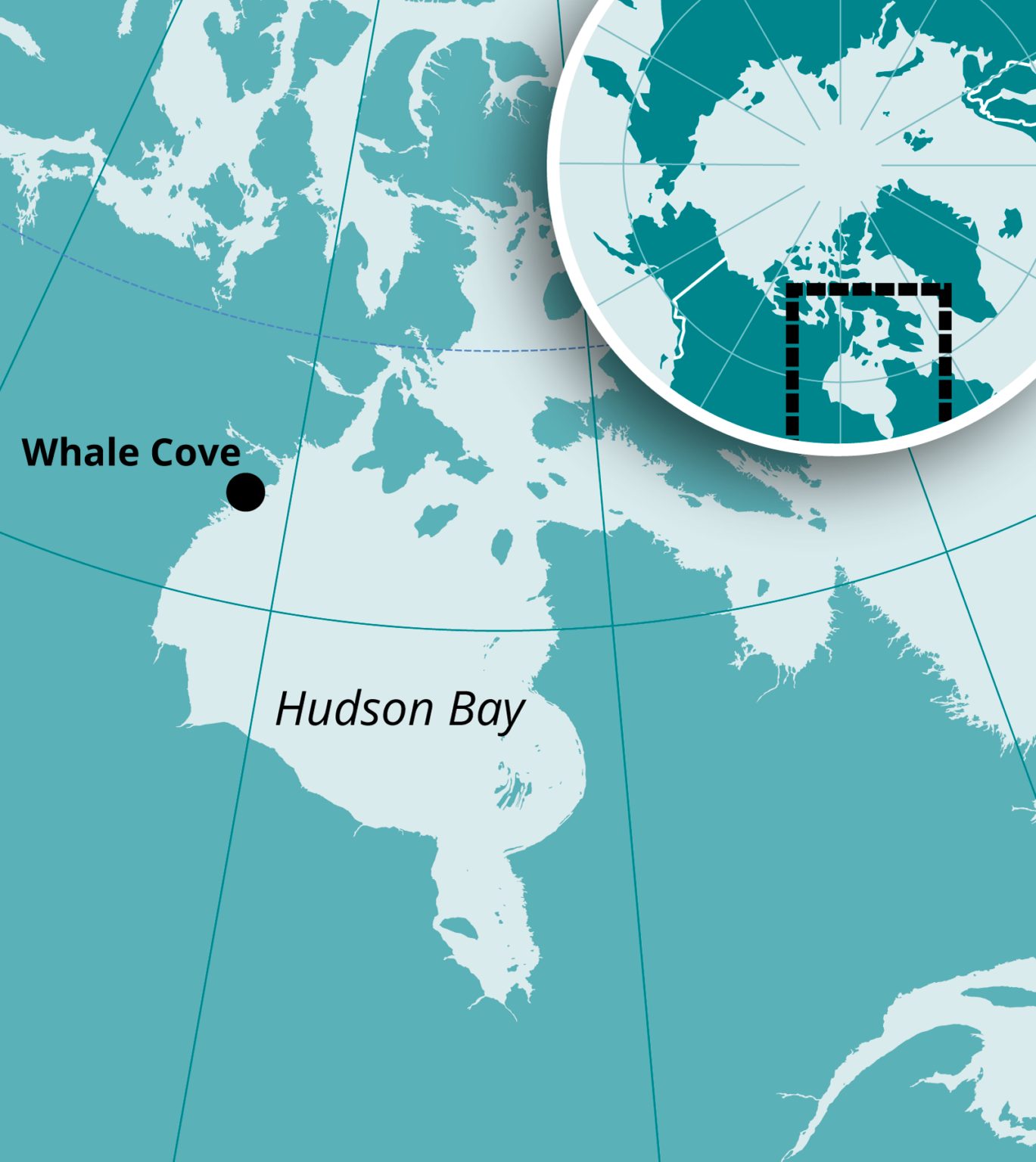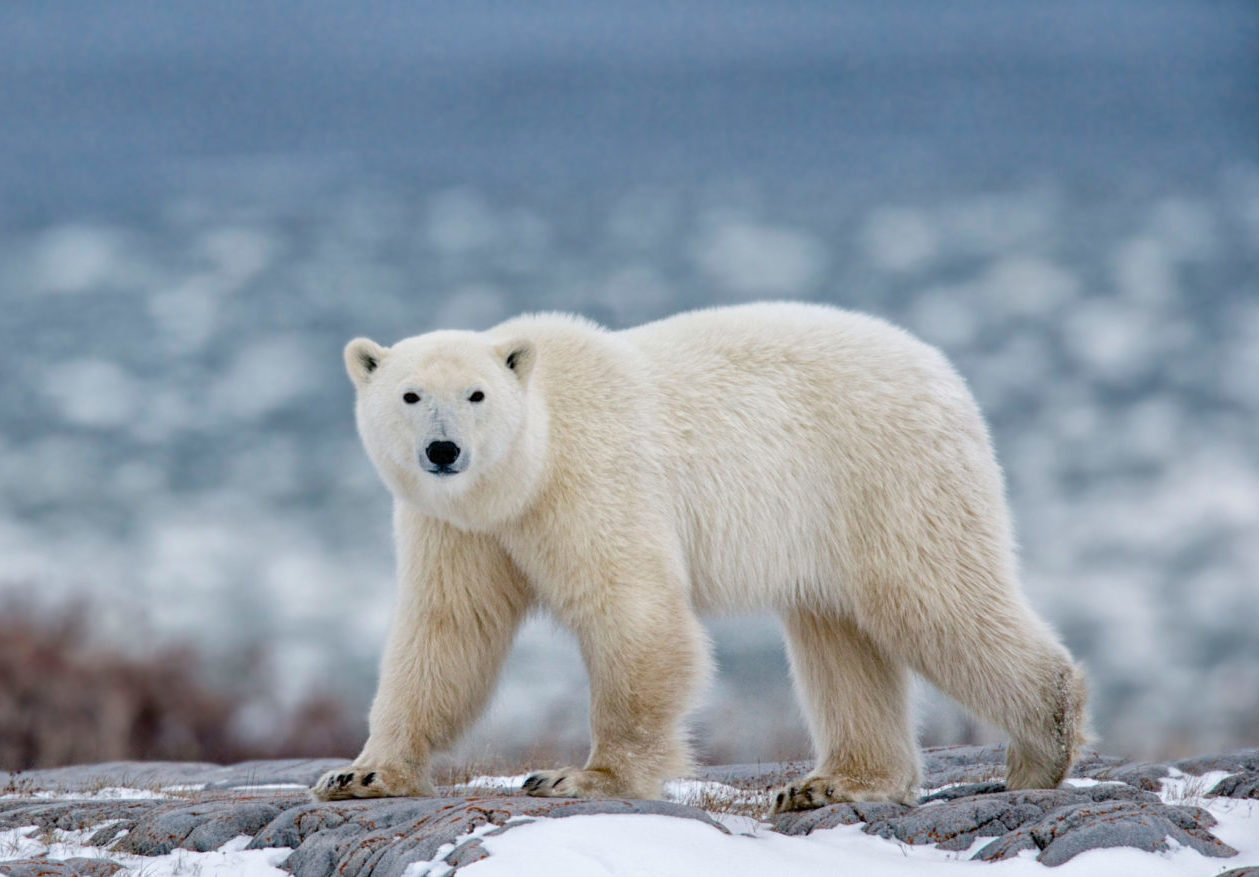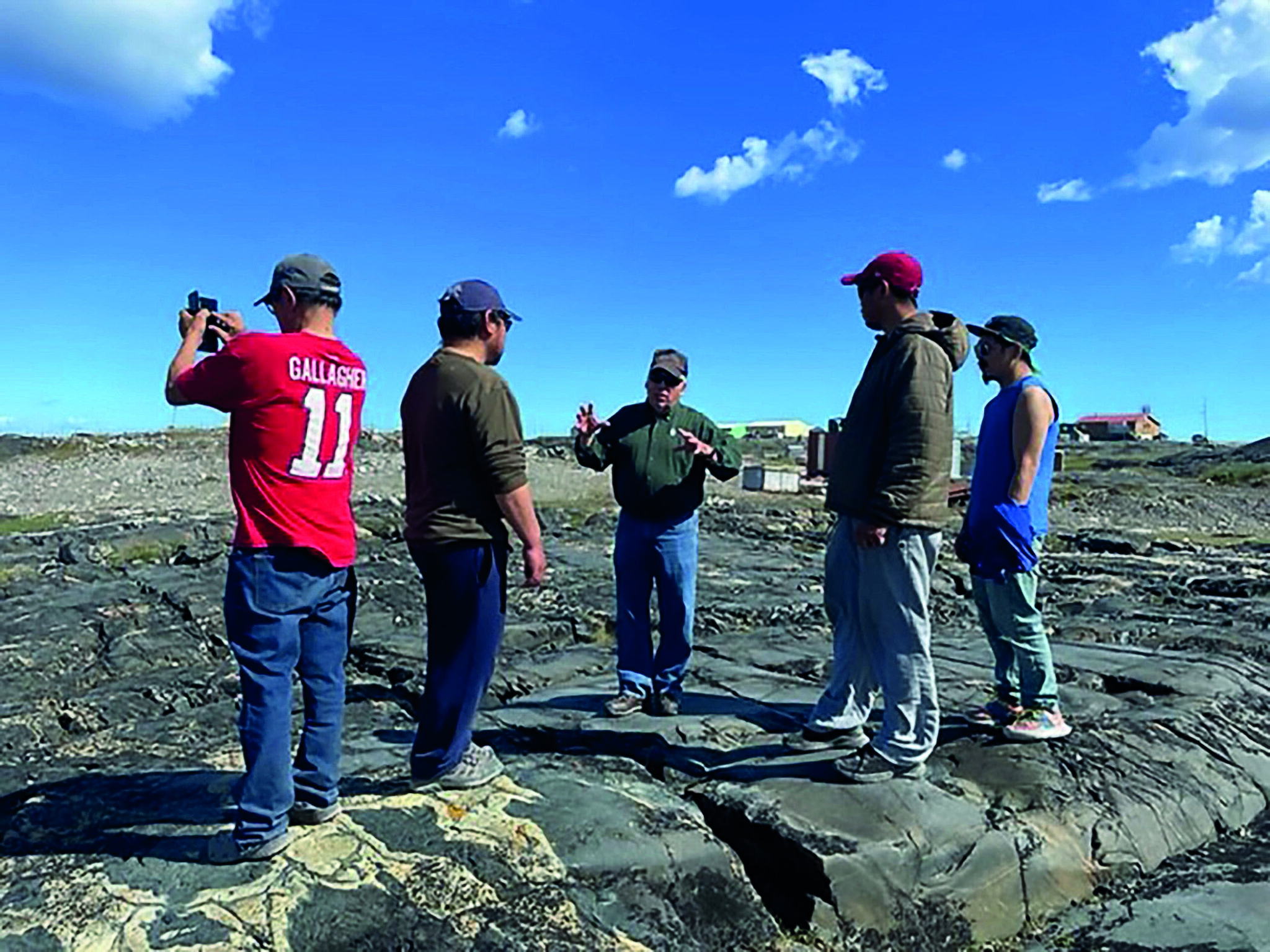Learning to live alongside polar bears in Whale Cove
Whale Cove is a small Inuit community located on the western coast of Hudson Bay in Nunavut. It is named for the large numbers of beluga whales that congregate in nearby waters every fall. But the whales aren’t the only Arctic species that can be seen in the area — there are also plenty of polar bears, and their numbers are increasing.
JASON HARASIMO explains why Arctic towns like Whale Cove are seeing more bears—and how these communities are responding.

Stanley Adjuk was spending a quiet day at his family cabin near the mouth of a river, nestled amid the vast tundra, with his wife, daughter and two young grandchildren. The adults were gathered inside while the children played outside. It was an ordinary enough get-together until a massive polar bear appeared just three or four metres away from the children.
Adjuk’s six-year-old grandson was the first to notice the towering presence. He had never seen a polar bear before, and mistook it for a caribou.
“Tuktu!” he exclaimed in Inuktitut, catching his grandfather’s attention. On Adjuk’s orders, the children scrambled inside, escaping the bear who was slowly stalking them. But in the chaos, Adjuk’s grandson stumbled to the ground. Adjuk snatched him up and pulled him inside just as the bear closed the gap, coming within a metre of the two before Adjuk slammed the door shut. He reached for his rifle and opened the door again, but noticed with relief that the bear was escaping into the distance.

A growing challenge
This harrowing incident underscores a troubling trend: polar bears are increasingly being sighted in proximity to cabins and communities throughout the Arctic.
Situated in the Kivalliq region of Nunavut—and lying within the northern extent of the most extensively studied polar bear subpopulation in the world—is the tight-knit community of Whale Cove. Living alongside one of Earth’s most formidable predators is a reality that the Inuit here have known since childhood. Equipped with considerable traditional knowledge of polar bear behaviour, they’ve learned to coexist with these majestic creatures. But as conditions shift rapidly due to the effects of climate change, both bears and humans are being forced to adapt.
“It’s their migration route,” explains Adjuk, a seasoned hunter. “We’re on their land. Whale Cove is on a route they have been taking for a long time.”
And their arrival is predictable—any time from mid-September to December. “They pass through and don’t usually stay for long,” he says.
Adjuk also says polar bear sightings were once far more rare.
“Now, we see them a lot,” he says. “They’re everywhere. In the last 15 to 20 years, we have seen more and more. Those we see near the community are generally in good health, not starving—but they seem less wary of humans.”

The demographics of the bears that frequent Whale Cove vary, says Adjuk. “We see young, old, mothers with cubs, without cubs, male, female. It’s not always the same bears, either.”
Staying Safe
Living alongside polar bears requires vigilance and a clear understanding of what actions are safe. For the past three years, WWF–Canada has supported a polar bear patrol programme in Whale Cove, organized and administered by the Issatik Hunters and Trappers Organization, which handles all wildlife matters in the community.
The programme employs a pair of patrollers during peak bear season, when the polar nights set in and the shores of Hudson Bay begin to freeze. These patrols not only help safeguard the community, but also bolster the feeling of security among residents.
Investments in the programme by WWF and Nunavut Tunngavik Inc. have allowed for the purchase of skidoos, communication devices, all-terrain vehicles and bear patrol training, all of which significantly increase the programme’s effectiveness and value.
While community members in Whale Cove have first-hand knowledge of the issues at hand, the lack of quantitative data has been a pressing concern. Investigative approaches and platforms like the SMART system are instrumental in capturing the critical data needed to build a comprehensive narrative.

Patrollers are outfitted with mobile devices so they can log occurrences while on patrol. These data not only validate the community’s concerns, but also serve as a powerful advocacy tool when engaging with territorial, federal and international government agencies. The data bridge the gap between anecdotal evidence and concrete, actionable information, enabling communities to make a compelling case for protecting both their way of life and the wildlife that share their environment.
Collecting this information from across the Arctic can also help with understanding whole-Arctic trends in conflict between people and polar bears, and could lead to new tools and measures that are effective in deterring bears from communities.
The ongoing changes in polar bear behaviour and the bears’ increasing proximity to communities like Whale Cove demand a multifaceted approach that combines traditional knowledge, modern technology and community engagement.
As these beautiful animals continue to adapt to a changing Arctic landscape, the residents of Whale Cove and other remote communities stand as the front-line stewards of both their unique way of life and the fragile balance of nature that surrounds them.
This article originally appeared in WWF Arctic’s quarterly magazine, The Circle

